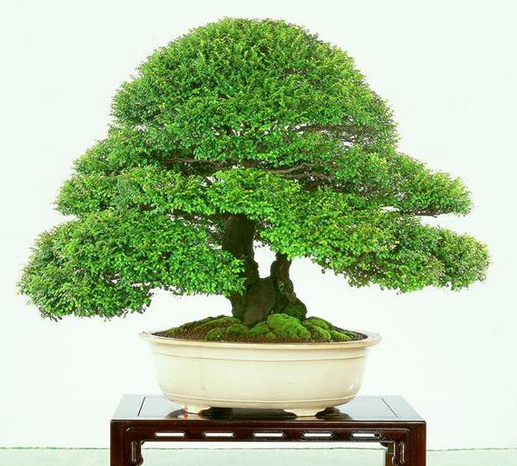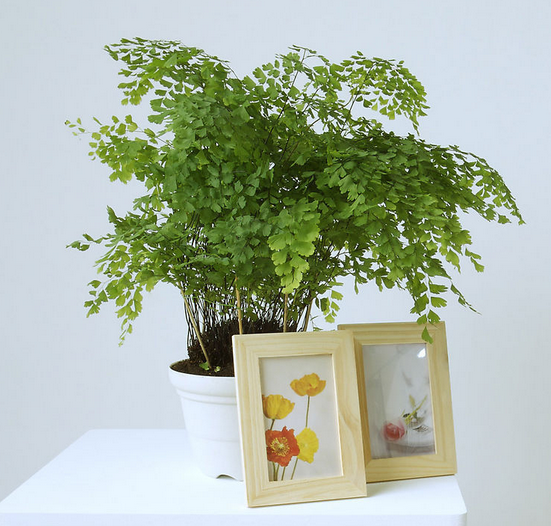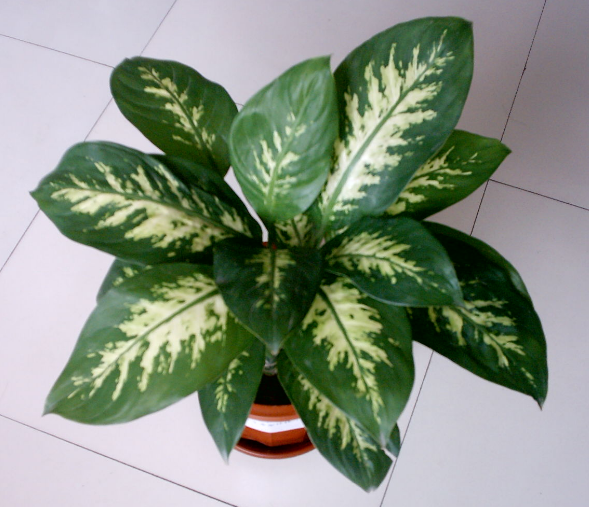How to cultivate sandalwood and red sandalwood bonsai
Sandalwood has been sought after since ancient times, sandalwood as a fine sandalwood, very popular. Rosewood can be used to make furniture, can also be planted into potted plants for people to watch. So how to cultivate sandalwood rosewood bonsai? What are the options? Next, let's briefly introduce the small series of decoration network together for everyone!

How to cultivate sandalwood bonsai
Cultivation of Sandalwood Seedlings
The planting season is from March to May, and it is best to use containers 30 to 40cm high. Generally, it is better to have a seedling height of about 1 cm, and too large a seedling should be cut and planted again. The size of the tree is 50cm. 50cm? 30cm, calcium magnesium phosphate fertilizer should be used as base fertilizer, each hole put 200~300g.
Management of Sandalwood Seedlings
After planting for one month, urea 50g should be applied to each plant, and then nitrogen, phosphorus and potassium compound fertilizer should be applied once or twice a year, 150g per plant each time, for two consecutive years. Also from time to time shovel grass loose soil, wipe bud pruning.
Virus Control of Sandalwood Seedlings
Sandalwood seedlings or young trees may suffer from black mole disease, which affects the leaves, branches and fruits of the plant. The disease is characterized by small spots on the leaves that cause discoloration and then turn black. Seedlings and young trees may also be infected with anthracnose, which often damages leaves and, in severe cases, may damage young shoots. If tree pests occur, leaf-eating pests such as golden flies and scarabs can be controlled with insect control.
Watering of Sandalwood Seedlings
Sandalwood watering is very particular, if the method is not appropriate may bring serious consequences. Sandalwood is a yang-loving plant and cannot be placed in a shady place. Watering should adhere to the principle of "watering and watering thoroughly". That is, about three days to irrigate water, watering can first irrigate appropriate amount of water to see the moisture of the soil, if the soil is dry after watering can continue watering, until the surface soil in the basin is wet,
The price of sandalwood seedlings
Sandalwood potted plant in the plant market is one of the most valuable plants, its market price is higher than other types of prices. Sandalwood bonsai prices on the market are uneven, and the price gap, which reasons do not need to say more, want to start friends to carefully consider before making a decision. The flower market often has sandalwood rosewood bonsai for sale, but after professional identification, it proves to be a plant called black bone tea. Those who are about to start or prepare to start remember to polish their eyes.
How to cultivate sandalwood bonsai
Sandalwood sandalwood planting sandalwood bonsai introduction
Sandalwood sandalwood, alias red sandalwood, purple elm, acid branch tree, belongs to a wide variety of wood species, but in the botanical community recognized sandalwood is only one kind, namely "sandalwood sandalwood." Commonly known as "small leaf sandalwood." The rest of the trees are classified as grass and pear trees. It is one of the most valuable wood species in the world,(referring to high-quality rosewood) because of its scarce quantity, few people see it, so it is valued by the world. According to historical records, rosewood is mainly produced in tropical areas of the Nanyang Islands, followed by Southeast Asia. China's Guangdong and Guangxi also produce rosewood, but the number is not much. A large number of materials are mainly imported.
identification of sandalwood
How to distinguish between true and false rosewood? Teach you five things five steps: (need to prepare water, alcohol, glass, white paper, knife)
1, rosewood wood fine, careful observation of the cross section can be found that the growth ring is not obvious.
2, take a small piece of red sandalwood on white paper can see purple scratches, red sandalwood density is high, take a small piece into the water will sink to the bottom.
3, scraping sawdust, you can smell a faint fragrance, fake sour wood although there will be aroma, but the smell is sour, in contrast to smell the difference is very obvious.
The cultivation of sandalwood
Growth Habits and Seedling Techniques of Sandalwood
Sandalwood grows faster at seedling and middle stages, but slower at mature and old stages. Generally, it begins to blossom and bear fruit 3 years after planting, with flowering period from April to December, full flowering period from July to September, fruit bearing period of 10 days after flowering, fruit maturity period of sandalwood is longer than August to November.
Collect large, plump, purple-red fruit, except pulp, clean seeds; seeds are best picked and sown when the temperature is still high (October-November). Sandalwood seeds have dormancy. Before germination, soak them with 50-100 mg/L gibberellin for 24 hours to break dormancy and promote seed germination. There are about 2800-3000 seeds per catty, and the seed rate can reach 70%. It can be drilled or broadcast on the sand bed, covered with 0.5 -1CM wet sand layer, properly watered, not too much. Sandalwood seedling should strengthen weeding, pine aborigines, topdressing and other management work, not only to wet but also to prevent ponding, host plant death to timely replant, host growth too prosperous also to prune, so as not to affect sandalwood growth.
Sandalwood sandalwood bonsai
Sandalwood rosewood, commonly known as "lobular rosewood", is popular in the international timber market, and sandalwood bonsai is also very popular. Because sandalwood rosewood is a tropical plant, sandalwood rosewood bonsai has higher requirements for temperature and humidity, it is suitable for growth in the northern tropics, and if you want to plant in the southern tropics, you have to choose a suitable environment.
The planting season is from March to May, and it is best to use containers 30 to 40cm high. Generally, it is better to have a seedling height of about 1 cm. Too large seedlings should be cut off before planting. The planting hole specification of saplings is 50cmí50cmí30cm, calcium magnesium phosphate fertilizer is used as base fertilizer, and 200~300g is put into each hole.
After planting for one month, urea 50g should be applied to each plant, and then nitrogen, phosphorus and potassium compound fertilizer should be applied once or twice a year, 150g per plant each time, for two consecutive years. Also from time to time shovel grass loose soil, wipe bud pruning.
Sandalwood bonsai cultivation method Sandalwood bonsai price
Because sandalwood can emit a faint fragrance, it is deeply loved by people. Many people will cultivate sandalwood bonsai indoors, so for sandalwood bonsai cultivation methods and sandalwood bonsai prices can understand, not too clear also does not matter, the following small series on the introduction of sandalwood bonsai related knowledge.
Cultivation method of sandalwood potted landscape
Sandalwood is a very unique tree species, in its infancy it needs to parasitize other plants, such as phoenix trees, red beans or acacia trees to survive, so there are very unique methods in the process of making bonsai and conservation. This is a semi-parasitic tree species. At the same time of cultivation, some corresponding life-long companion host species should be cultivated, which can be tall and fast-growing tree species such as Nanyang jacaranda, Casuarina equisetifolia, catechu or Acacia. They should be planted together with sandalwood. Only when sandalwood hosts survive can they survive. However, it should be noted that if the host tree species grow particularly well, much better than sandalwood, then sandalwood does not have enough nutrients, or will die, so it is generally appropriate to insert seeds after 18 months.
Sandalwood is also a sensitive plant, and its requirements for moisture and soil fertility are relatively high. In terms of watering, sandalwood is very sensitive, water can not be too much, once there is water, the roots of the trees will rot, the leaves of the trees will gradually yellow, stop growing and gradually move towards death. Therefore, in the process of maintenance, the moisture must be appropriate, and at the same time, attention should be paid to placing the bonsai in a ventilated place and doing a good drainage system. In addition, in order to maintain its rapid growth requirements, it is necessary to apply fertilizer in a timely manner until it is finished, and the amount of fertilizer can be reduced.
3, as a bonsai, the shape of the bonsai is very important, so is the sandalwood bonsai. Especially sandalwood, a tree species with shallow roots, needs to do the corresponding work in time after planting, such as windbreak, weeding and pruning. Sandalwood branching ability is actually quite strong, in the rapid growth period, sandalwood branches are more, seriously damaging the beauty of bonsai, so it is necessary to properly prune, can cut off excess branches to retain the trunk, this not only can increase sandalwood windproof ability, but also maintain the beauty of bonsai, is very necessary.
Sandalwood bonsai prices
Sandalwood and China's incense wood is similar, its wood body has a strange fragrance, Buddhism called "sandalwood", known as "king of spices","green gold" reputation. Sandalwood is one of the slowest growing trees in the world, so the number is very small, but people's demand for it is very large, supply exceeds demand, and its growth conditions are more unique, so sandalwood has always been one of the most precious and expensive woods.
However, as a bonsai sandalwood price is not expensive, generally around 100 yuan, depending on the size and growth of bonsai, want to add a little fragrance to the home and like the fragrance of sandalwood can choose to raise a pot.
The price of two pots bought by Xiaobian
Ebony bonsai stump lobular sandalwood tree number 900-999, price 180 yuan.
Lan Zhuxuan expensive black bone tea ebony bonsai stump plants potted indoor desktop green plants lobular sandalwood, price 160 yuan.
- Prev

The reproduction of Dryopteris is convenient and simple to add a touch of green to the home.
Dryopteris is a kind of beautiful foliage plant with beautiful stems and leaves. Now it is often planted in pots to beautify the home environment. What are the breeding methods of Dryopteris?
- Next

What are the functions of indoor pot culture of flower and leaf evergreen
Evergreen is a famous variety of evergreen. It is an elegant indoor foliage plant with unique leaf pattern. It is also one of the most popular indoor foliage plants. Nowadays, many people breed evergreen at home. So what is the role of evergreen?
Related
- Fuxing push coffee new agricultural production and marketing class: lack of small-scale processing plants
- Jujube rice field leisure farm deep ploughing Yilan for five years to create a space for organic food and play
- Nongyu Farm-A trial of organic papaya for brave women with advanced technology
- Four points for attention in the prevention and control of diseases and insect pests of edible fungi
- How to add nutrient solution to Edible Fungi
- Is there any good way to control edible fungus mites?
- Open Inoculation Technology of Edible Fungi
- Is there any clever way to use fertilizer for edible fungus in winter?
- What agents are used to kill the pathogens of edible fungi in the mushroom shed?
- Rapid drying of Edible Fungi

